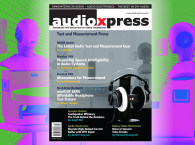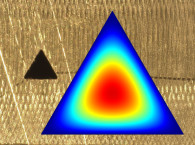 Here is another issue of audioXpress that you will not want to miss. Download your digital copy (even if you are a print subscriber and your copy is in the mail). audioXpress October 2017 is another great example of a strong combination of inside perspective, educational value, and practical projects.
Here is another issue of audioXpress that you will not want to miss. Download your digital copy (even if you are a print subscriber and your copy is in the mail). audioXpress October 2017 is another great example of a strong combination of inside perspective, educational value, and practical projects.Starting with Richard Honeycutt's monthly column Hollow-State Electronics, which always provides a unique and valuable perspective on the world of tubes, we discuss The Circlotron Power Amplifier. As Honeycutt explains, among the little-known jewels of hollow-state power amplifiers, the Circlotron is one of the few offering real advantages and boasting a degree of commercial success.
Also, in It's About the Sound, Ron Tipton explores the practical aspects of sound reproduction, from vinyl to streaming audio. Starting a new series, titled "Vinyl vs. CD," Tipton explores the sound differences with a series of measurements.
And if you like reading Shannon Becker's interviews with some of the greatest experts and entrepreneurs in the audio industry, jump straight to an interview with Mark Schneider of Linear Tube Audio. Schneider founded Linear Tube Audio in 2015, after being forced into an early medical retirement from an extensive engineering career that included management, manufacturing, and product design. He is now committed to his passion owning an audio company, exploring the amplifier designs of David Berning.
As for this month's features, we start with Audio Electronics, where Christopher Paul explains his Denali Voltage Reference concept—a small, wide range, low power, low impedance design for audio power and preamplifier designs using voltage regulators. For this design, Paul was inspired by Peter Delos’ vacuum tube guitar amplifier project, previously published in audioXpress. In this case, the author selected linear regulators, instead of switching, and explains how feedback networks affect their performance, particularly in the higher voltage applications that vacuum tube amplifiers demand.
Also in this edition, Stuart Yaniger does a full objective review of the surprising Markaudio-Sota Viotti speakers. MarkAudio is well known in the DIY community as a provider of high quality loudspeaker drivers, specializing in single-driver and wide-band speakers. Designed by British-based Mark Fenlon, these drivers have been the basis for dozens of published projects. MarkAudio and SOTA Acoustics now teamed up to design and market a line of high end loudspeaker systems under the Markaudio-Sota brand. The speaker under review, the Viotti One, is a two-way stand-mount monitor, featuring a 50 mm cone tweeter and a 110 mm cone woofer loaded in a ported cabinet of approximately 30 ltr. The stands are included and are finished in a luxurious-looking black lacquer. The price is just under $3,000 for a stereo pair.
Next, we jump into the future in "Virtually Tuning an Automotive Audio System," with a description of how Harman is using COMSOL Multiphysics simulation software to emulate a car cabin’s sound system in order to optimize the speaker acoustics. The article details how experts at Harman are using physical experiments in conjunction with mathematical modeling and numerical simulation to improve the development process for the latest vehicle infotainment technology.
On the practical side of things, there are two great projects featured in this edition. First, Ethan Winer explains how to "Build the Mojo Maestro," a simple device that allows "subtle distortion" or saturation from any recording or track. Just using two diodes and a few resistors, Winer designed this simple box using the free LTspice simulation software and only half a dozen parts. And the results can be heard on the audioXpress website, with Winer playing multiple instruments, with and without the "Mojo effect."
 In You Can DIY!, author Dimitri Danyuk describes the design and performance of a high-quality dc-coupled all-JFET amplifier. The circuit was inspired by Erno Borbely designs and was built with readily available silicon junction field effect transistors (JFETs) from Linear Integrated Systems. The input stage is the dual complementary JFET differential pair, the second stage is a symmetrical amplifier and the output stage is a complementary source follower. The amplifier can drive loads up to 150 Ω.
In You Can DIY!, author Dimitri Danyuk describes the design and performance of a high-quality dc-coupled all-JFET amplifier. The circuit was inspired by Erno Borbely designs and was built with readily available silicon junction field effect transistors (JFETs) from Linear Integrated Systems. The input stage is the dual complementary JFET differential pair, the second stage is a symmetrical amplifier and the output stage is a complementary source follower. The amplifier can drive loads up to 150 Ω.audioXpress October 2017 is now ready to access and download online. Just visit: www.gotomyxpress.com
Of course you can also subscribe here: www.audioxpress.com/page/audioXpress-Subscription-Services.html
And you can also buy a single printed issue or the complete audioXpress issue archive on USB at www.cc-webshop.com








